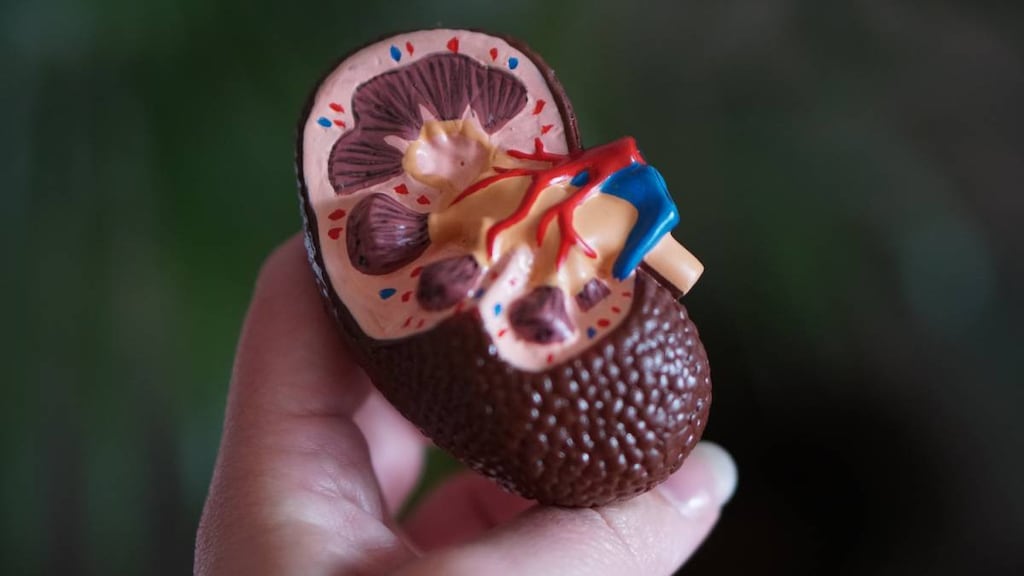Kidney Cancer Stages Explained

The kidneys play an important and sometimes underappreciated role in the body. They’re responsible for filtering waste and excess fluid from the body and directing those substances to the urine for removal, explains the National Kidney Foundation. They also balance the body’s fluids, control the production of red blood cells and release hormones that help control blood pressure, just to name a few other benefits.
When kidney cancer (which is also known as renal cancer) occurs, this can have a critical impact on your health in multiple ways. It’s a fairly common cancer, ranking among the 10 most common for both men and women. In 2020, the American Cancer Society estimates that more than 70,000 new cases of kidney cancer will occur, and almost 15,000 individuals will die from the disease.
Another fact about kidney cancer, notes the Mayo Clinic, is that its incidence seems to be increasing, although this may be due to more existing cases being identified thanks to advances in medical imaging.
Kidney cancer: what you need to know
Though several different forms of kidney cancer exist, the most common by far is known as renal cell carcinoma. It accounts for about 90 percent of kidney cancer cases overall. The most common form of kidney cancer among children is a type known as Wilms’ tumor.
Kidney cancer is classified in stages, numbered from 1 through 4 (or, in Roman numerals, I through IV), that are used to rank the severity and extent of the cancer. Stage 1, for example, identifies a smaller tumor that is only present in the kidney. Stage 4 kidney cancer may have spread to various parts of the body and be more difficult to treat.
To determine what stage of kidney cancer is present, doctors often use a system known as TNM, which stands for tumor, nodes and metastasized. Essentially, examining the size of the tumor (T), determining if the tumor has spread to nearby lymph nodes (N) and checking if the cancer has metastasized (M), or spread to other organs in the body, helps in classifying the stage of the cancer. Each T, N and M variable is given a number ranking based on its severity, and the sum of these numbers helps determine the cancer stage.
To determine a kidney cancer’s stage, your health care team will rely on the results of physical examinations, imaging tests, biopsies and, in some cases, surgeries to determine these three factors.
Stage 1 kidney cancer
Most cancers have a stage 0 when they are very early in development. When a kidney cancer tumor has grown to a significant size, it can be classified as stage 1.
- Diagnosis: For stage 1 kidney cancer to be present, your tumor size (T) must be at a T1. This means it’s 7 centimeters (about 2¾ inches) across or smaller. The cancer also has not spread to lymph nodes (N0) or metastasized to other organs (M0).
- Treatment: For very small tumors, either freezing the tumor to kill the cancer (cryoablation) or using radiofrequency to heat the tumor (radiofrequency ablation) is a treatment option. Surgery to remove the affected kidney is also a common treatment.
- Prognosis: The prognosis for people with both stage 1 and 2 kidney cancer is good. The rate of survival after 5 years for the two stages combined is 93 percent, according to the American Cancer Society.
Stage 2 kidney cancer
The advancement of kidney cancer from stage 1 to stage 2 doesn’t represent a major change in the threat of the cancer. The cancer is still isolated to the kidney itself and has not spread to other parts of the body. What distinguishes stage 2 from stage 1 is that the tumor has grown in size.
- Diagnosis: For stage 2 kidney cancer to be present, your tumor size (T) must be at a T2. This means it’s larger than 7 centimeters (about 2¾ inches) across and is still confined to the kidney. The cancer also has not spread to lymph nodes (N0) or metastasized to other organs (M0).
- Treatment: Because the cancer is still found only in the kidney, surgery to remove the affected kidney is a commonly recommended treatment. Because of the larger tumor size, cryoablation and radiofrequency ablation are less likely to be successful treatments.
- Prognosis: The prognosis for people with both stage 1 and 2 kidney cancer is good. The rate of survival after 5 years for the two stages combined is 93 percent, the American Cancer Society says.
Stage 3 kidney cancer
When kidney cancer reaches stage 3, things get a little more complicated, and the cancer also becomes harder to treat. The tumor is now growing in the area outside the kidney.
- Diagnosis: A diagnosis of stage 3 kidney cancer may occur if the cancer has spread to nearby lymph nodes (N1) but not nearby organs (M0). The tumor can be any size, T1-T3, and still be considered stage 3 cancer. A stage 3 diagnosis also may be made if the tumor has not spread into other lymph nodes (N0) or organs (M0) but is large enough to have grown into a major vein or tissue surrounding the kidney (T3).
- Treatment: A combination of therapies may be used once kidney cancer reaches stage 3, notes the Mayo Clinic. Treatment typically begins with surgery to remove as much of the tumor as possible. Then a combination of systemic therapies (treatments that target the entire body), such as immunotherapy and chemotherapy, may be used to help kill or prevent the growth and proliferation of any cancer cells remaining in the body.
- Prognosis: According to the American Cancer Society, the survival rate for stage 3 cancer is lower than stages 1 and 2 but still fairly favorable. For “regional” forms of kidney cancer, which include all stage 3 cancers and some stage 4 cancers that have remained near the kidney, the 5-year survival rate is 69 percent.
Stage 4 kidney cancer
The most advanced form of kidney cancer is stage 4. This is typically identified by a main tumor that has grown quite large and well beyond the kidney itself, or kidney cells that have spread to other organs in the body.
- Diagnosis: There are two scenarios that lead to a stage 4 diagnosis. One is a T4 tumor that has spread beyond the kidney, beyond the tissue surrounding it and possibly into the adrenal gland. The other is cancer cells that have spread to distant lymph nodes or organs (M1).
- Treatment Options: It may not be possible to cure cancer that has spread to other areas of the body, but treatment to control the cancer and prevent its spread might be viable. This may involve some combination of immunotherapy, targeted therapy, chemotherapy and radiation as well as surgery or tumor embolization (a procedure aimed at killing a tumor by cutting off its blood supply). Clinical trials may also be available to treat certain forms or stages of kidney cancer.
- Potential Outcomes: If stage 4 kidney cancer has spread only to areas near the kidney, the 5-year survival rate is about 69 percent. For stage 4 cancer that has spread to distant areas of the body, the 5-year survival rate is about 12 percent, the American Cancer Society says.
The final word
Like most forms of cancer, kidney cancer gets harder to treat and cure the more advanced it becomes. The earlier it’s detected and treated, the better the outcome.
Article references
- National Kidney Foundation, How Your Kidneys Work https://www.kidney.org/kidneydisease/howkidneyswrk
- American Cancer Society, Key Statistics About Kidney Cancer https://www.cancer.org/cancer/kidney-cancer/about/key-statistics.html
- Mayo Clinic, Kidney Cancer, Mayo Clinic https://www.mayoclinic.org/diseases-conditions/kidney-cancer/diagnosis-treatment/drc-20352669
- American Cancer Society, Kidney Cancer Stages https://www.cancer.org/cancer/kidney-cancer/detection-diagnosis-staging/staging.html
- American Cancer Society, Survival Rates for Kidney Cancer https://www.cancer.org/cancer/kidney-cancer/detection-diagnosis-staging/survival-rates.html

